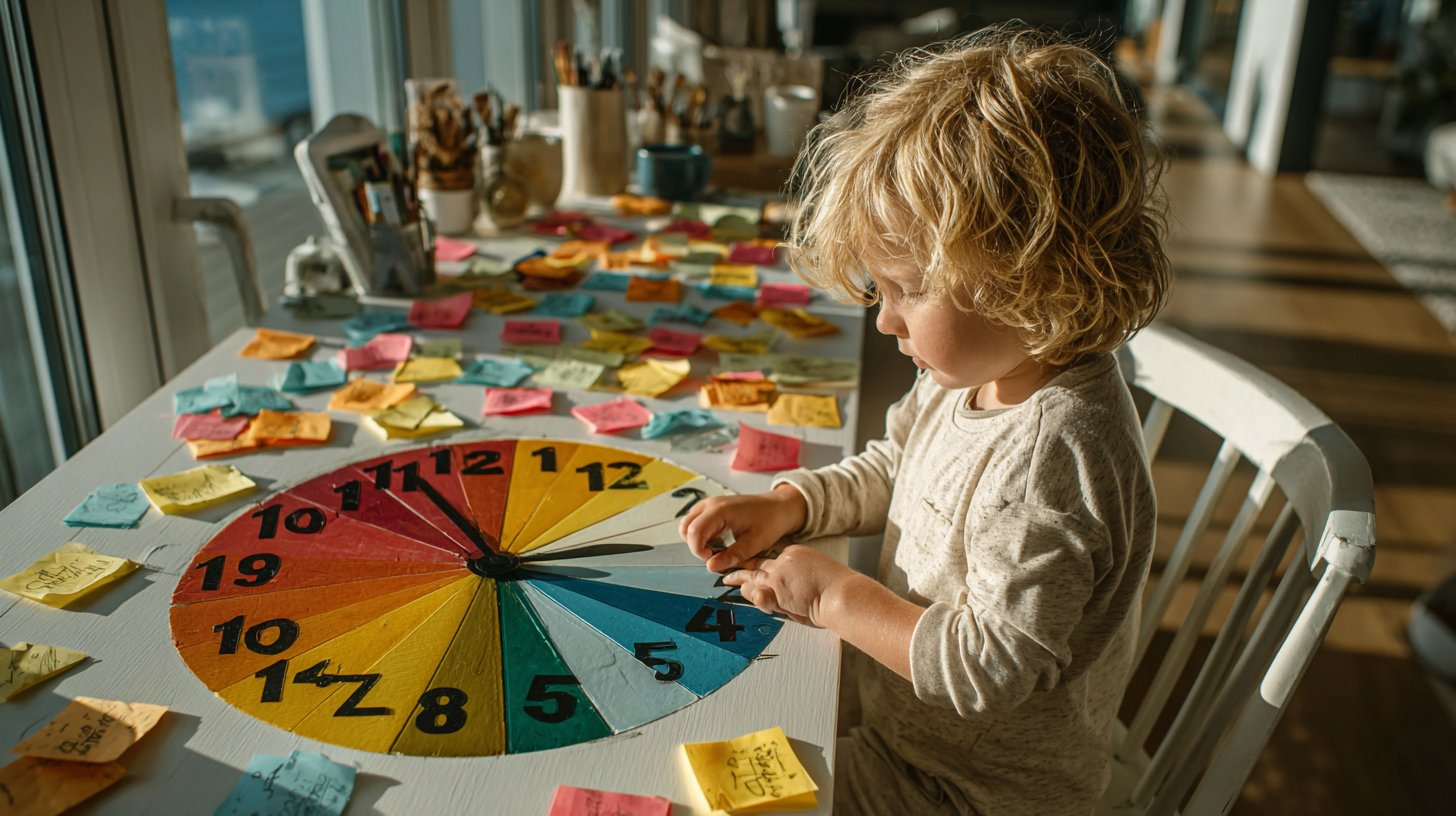How One Simple Question Builds Your Child’s Math Brain — Teacher Mom’s Proven Guide
How One Simple Question Builds Your Child’s Math Brain — Teacher Mom’s Proven Guide When my 4-year-old asked why he
“Mom, what time is dinner?” my 6-year-old Emma asked for the fifth time in ten minutes last week. I pointed to our kitchen clock, and she stared at it with the same confused expression she’d worn for months. Despite countless worksheets and drilling sessions, analog clocks remained a complete mystery to her.
As a former math teacher, I knew that time concepts are notoriously challenging for young learners. The abstract nature of time, combined with the complexity of analog clock faces, creates a perfect storm of confusion for developing minds. Traditional teaching methods often rely heavily on rote memorization without building genuine understanding of time relationships.
That’s when I remembered a simple clock game from my teaching days that had consistently worked magic with struggling students. This hands-on approach transforms time-telling from a frustrating chore into an engaging discovery process that children actually enjoy. The best part? You probably already have everything you need at home.

 Clock Basics for Kids: Start Teaching Time Through Play
Clock Basics for Kids: Start Teaching Time Through PlayBefore diving into complex time-telling, children need to understand that clocks are tools for measuring something invisible yet constant. To teach kids to tell time effectively, I start by having my kids observe our daily routines and notice how certain activities always happen in the same order, creating natural time awareness.
We begin with clock exploration games where Emma and Jake examine different types of clocks around our house. They discover that digital clocks show numbers while analog clocks use hands to point at numbers, making connections between different time representations without pressure or stress.
The key breakthrough happens when children realize that the short hand moves slowly while the long hand moves quickly. We practice this concept by having them move their arms like clock hands, with one arm representing hours and the other representing minutes, creating kinesthetic memory of clock movement patterns.

 Fun Hour Recognition Games to Help Kids Tell Time
Fun Hour Recognition Games to Help Kids Tell TimeOnce children understand basic clock mechanics, hour recognition becomes our primary focus. I created a simple matching game using sticky notes with times written on them and our practice clock, making hour identification feel like solving puzzles rather than completing assignments. This is a fun and relaxed way to teach kids to tell time.
We practice “hour time” exclusively for several days, focusing only on times like 3:00, 7:00, and 11:00. This eliminates the confusion of minute hands and allows children to build confidence with the fundamental concept of reading hours before adding complexity.
Our favorite hour game involves setting the clock to different hour times and having the kids act out what they typically do at those times. Three o’clock might mean afternoon snack time, while eight o’clock represents bedtime routines, connecting abstract time concepts to concrete daily experiences.

 Teach Half-Hours & Quarter-Hours with Simple Clock Patterns
Teach Half-Hours & Quarter-Hours with Simple Clock PatternsAfter mastering hour recognition, we introduce half-hours using visual fraction concepts that children can easily grasp. To teach kids to tell time in more detail, I explain that when the long hand points to six, it means the hour is “half finished,” just like cutting a pizza in half creates two equal pieces.
Quarter-hours become approachable when presented as “quarter pieces” of the clock circle. We practice recognizing when the minute hand points to three (quarter past) or nine (quarter until), using familiar fraction language that makes these concepts less intimidating for young learners.
Pattern recognition games help solidify these concepts by having children identify what comes next in time sequences. We might practice 2:00, 2:15, 2:30, and ask them to predict 2:45, building logical thinking skills alongside time-telling abilities.

 Teaching 5-Minute Intervals with Clock Games
Teaching 5-Minute Intervals with Clock GamesOnce children master hour, half-hour, and quarter-hour recognition, we tackle five-minute intervals using skip-counting skills they’ve developed in other math contexts. We practice counting by fives around the clock face, which helps to teach kids to tell time with precision.
Our “time detective” game challenges kids to figure out mystery times by giving clues about hand positions. “The short hand is between four and five, and the long hand points to seven” becomes an engaging puzzle that develops analytical thinking while reinforcing time concepts.
Real-world application activities help children see the relevance of precise time-telling in daily life. We practice reading actual appointment times, TV show schedules, and cooking timers, making time-telling feel practical and important rather than abstract and pointless.

 Connect Digital & Analog Time: Smart Activities for Kids
Connect Digital & Analog Time: Smart Activities for KidsThe final piece of time-telling mastery involves connecting digital and analog time representations seamlessly. To fully teach kids to tell time, we practice “translation games” where children read analog clocks and write the corresponding digital times, then reverse the process by setting analog clocks to match digital displays.
Technology integration activities use educational apps and online games that reinforce our hands-on learning with interactive practice. However, I always ensure that screen time supplements rather than replaces the fundamental hands-on manipulation that builds genuine understanding.
Assessment games help me gauge my children’s progress without creating test anxiety. We play “time bingo” where children match analog and digital representations, or “time storytelling” where they create narratives about their day using specific times throughout their adventures.

To teach kids to tell time effectively at home, you don’t need expensive materials or complicated lesson plans — just patience, creativity, and a willingness to turn daily life into a classroom.
Time awareness builds independence. It empowers children to anticipate transitions, manage their own routines, and understand the rhythm of their world — all of which support emotional regulation and executive function development.
Watching Emma confidently announce “It’s 4:30, time for my snack!” reminded me that the best learning doesn’t feel like learning at all. When we teach kids to tell time through play, we’re not just helping them read clocks — we’re helping them grow.
How One Simple Question Builds Your Child’s Math Brain — Teacher Mom’s Proven Guide When my 4-year-old asked why he

Why Mistakes Matter in Math: Build Confidence Through Struggle Last Tuesday, I watched my first-grader throw his pencil across the

How to Turn Emotional Moments Into Math Learning: A Parent’s Guide to Raising Confident Problem Solvers Last week, my 6-year-old
*Also read:
25 Brilliant LEGO Math Activities to Build Number Sense and STEM Skills at Home
Teach Kids to Tell Time: The Clock Game Every Parent Should Try at Home